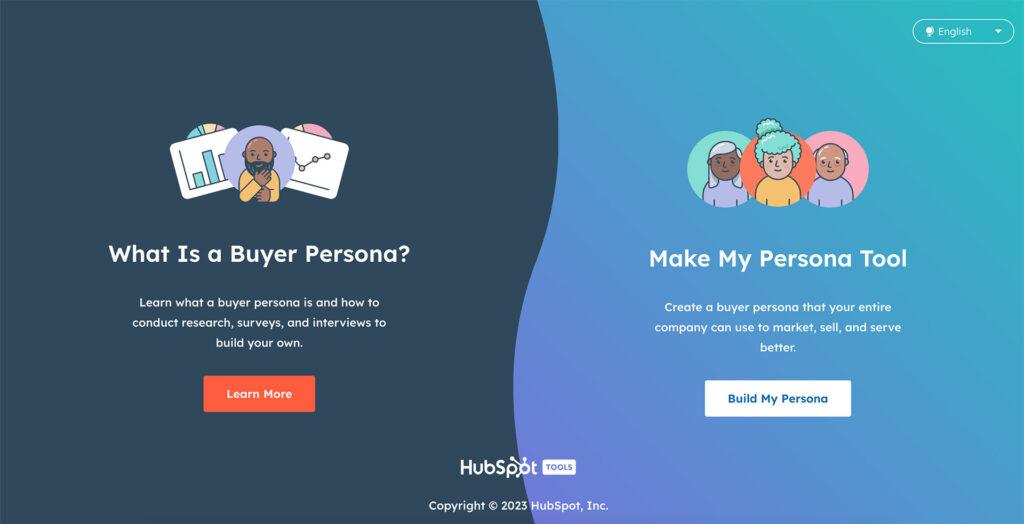Are you tired of feeling like your marketing efforts are going unnoticed? Do you wish that your ideal customers would just find you? Imagine having a loyal customer base who not only loves your products but also understands and supports your mission. Well, it’s not a matter of luck, it’s about having a deep understanding of your niche and target audience. By understanding the needs and preferences of your target audience, you can create content and products that truly resonate with them.

What are Niche and Target Audience?
- Niche: A specialized segment of a larger market. It focuses on providing distinct products or services to a well-defined customer group.
- Target Audience: The specific group of people most likely to buy your product or service. They share common characteristics (age, interests, problems, etc.).
Let’s break down “niche” and “target audience” in more detail:
Niche
- Imagine the Market as a Giant Pie: Each slice represents a different segment or potential customer base. A niche carves out an even smaller subsection of that slice.
- Specialization: Niches focus on specific needs, pain points, or preferences that larger, general businesses often overlook or cannot fully address.
- Types of Niches: Niches can be defined by:
- Demographics (age, profession, location)
- Interests (e.g., eco-friendly products, extreme sports, luxury travel)
- Pain Points and Goals (e.g., weight loss for busy professionals, language learning for travel enthusiasts)
- Values (e.g., sustainable fashion, socially conscious products)
Examples of niche:
- Broad Market: Pet Supplies
- Niche: Organic pet food for dogs with allergies
- Even More Niche: Organic, grain-free kibble for large breed dogs with sensitive stomachs
Target Audience
- Bullseye: Your target audience is the center of the bullseye you’re aiming for within your niche. These are the people most likely to need and want what you offer.
- Defining the Ideal Customer: Think of building a detailed customer persona. Consider:
- Demographics: Age, gender, location, income, education, job title, etc.
- Psychographics: Interests, hobbies, values, beliefs, personality types, lifestyles.
- Pain Points: What problems keep them awake at night? What do they deeply desire?
- Online Behavior: Where do they hang out online (social platforms, communities)? How do they search for solutions?
Example of target audience:
- Niche: Organic pet food for dogs with allergies
- Target Audience: Owners of large-breed dogs concerned about pet health, who have disposable income, are active on social media, and tend to buy premium products.
Why the Distinction Matters
Understanding the difference is crucial because:
- Focus: A well-defined niche lets you concentrate your marketing and development efforts.
- Differentiation: Niches help you stand out from larger competitors who can’t be everything to everyone.
- Stronger Messaging: Knowing your target audience intimately enables personalized marketing that resonates deeply, increasing conversions.

Why Niche and Target Audience Matter for Small Businesses
Small businesses often have limited resources, which is why it’s crucial to focus on a specific niche or target audience. By doing so, you can avoid direct competition with larger businesses and stand out in the market. Additionally, you can tailor your marketing campaigns to your ideal customer, which can help you build stronger relationships and increase customer loyalty. Understanding your customer’s needs and preferences can help you create a more personalized experience, leading to increased customer satisfaction and repeat business.
Let’s break down why defining your niche and target audience is particularly crucial for the success of small businesses:
Focus: Helps you concentrate your limited resources.
- Time and Effort: Small businesses often lack the staff or large budgets of bigger players. A niche lets you streamline operations and focus your energy on the areas that matter most to your ideal customer.
- Financial Efficiency: Targeted marketing campaigns get more mileage out of every advertising dollar compared to unfocused, generic approaches.
- Expertise: By specializing, small businesses can become THE authority in their niche, garnering trust and attracting like-minded customers.
Competition: Stand out from bigger businesses and avoid direct competition.
- The Ocean vs. the Pond: Trying to compete directly with giants in a broad market is like a small fish in a vast ocean. Niching down puts you in a smaller, more manageable pond with less overwhelming competition.
- Differentiation: Niches highlight the unique value propositions a small business can offer – personalized service, specialized knowledge, or a more curated experience
- Agility: Due to their size, small businesses can often pivot more quickly to fill emerging gaps or capitalize on trends within their niche market.
Marketing: Tailor messaging and campaigns directly to your ideal customer.
- Language that Resonates: When you know your target audience deeply, you can speak their language, literally and figuratively. This means marketing copy and visuals that directly tap into their desires and pain points.
- Precise Targeting: Instead of scattershot advertising, niche and audience clarity allows laser-focused campaigns on platforms or in publications your ideal customer frequents.
- Higher Conversion Rates: Messaging that perfectly aligns with a specific audience’s needs translates into a higher likelihood of purchase and long-term loyalty.
Customer Connection: Build stronger relationships by deeply understanding their needs.
- Personalized Experience: Going beyond basic demographics, knowing your audience’s values and lifestyles lets you create memorable customer experiences, driving greater satisfaction.
- Community: Niches often foster a sense of shared identity, transforming customers into a community of like-minded people invested in your brand.
- Word-of-Mouth: Delighting a devoted niche audience is a strong catalyst for organic referrals and customer advocacy.

Steps for Identifying Your Niche and Target Audience
Self-Assessment: A Roadmap to Your Niche
Here’s how to turn introspection into a powerful niche exploration tool:
1. Passions: What gets you genuinely excited?
- Brainstorm: Jot down things that make you lose track of time, feel energized, or spark curiosity. This could be hobbies, causes, subjects you love debating, etc.
- The “Kid Test”: Think back to what you were obsessed with as a child. These early passions can reveal core interests that still excite you.
- Energy Audit: Pay attention to activities or topics that consistently leave you feeling invigorated vs. those that drain you.
2. Skills & Expertise: What are you exceptionally good at?
- Natural Talents: What comes easily or effortlessly to you that others struggle with?
- Developed Skills: Look at your education, certifications, and work experience. Where do you consistently deliver exceptional results?
- Feedback: Ask friends, family, colleagues, ex-bosses – what are you known for being good at? (Sometimes things we do well become so second nature we neglect to see them!)
3. Opportunities: Are there gaps or unmet needs in the market you could fill?
- Pain Point Hunt: What frustrations do you hear from people in your network (personal or professional)? What do they wish existed?
- Your Own Struggles: What products or services do YOU always seek but have trouble finding? Could you create the perfect solution?
- Market Trend Watching: Explore trending news articles, social media, or niche industry publications to spot emerging demands or underserved areas.
Matching Your Self-Assessment to Your Business

Here’s how to turn this inward analysis into actionable niche discovery:
- Overlap is Key: Look for areas where your passions, skills, and market opportunities intersect. This creates a niche with authenticity and expertise.
- Problem Focused: Does your passion/skillset align with solving a genuine problem many people face? That’s a solid niche foundation.
- Viability Check: Even if you’re passionate and skilled, is it a niche large enough to sustain a business? A bit of market research is key (we’ll cover this in later steps).
Example
- Passion: Cooking healthy, delicious meals with minimal time
- Skill: Recipe development, clear instruction, dietary knowledge (gluten-free)
- Opportunity: Busy professionals struggle with healthy weeknight meals, especially those with intolerances.
- Niche Potential: Quick, gluten-free recipe service + prepped ingredients
A Note on Passion: While immensely helpful, don’t feel your ENTIRE business must be your ultimate life calling. It’s more about finding a niche where you have genuine interest, skill, and can fulfill a market need. Passion often grows as you witness the positive impact your business has on others.
Market Research: Your Niche Validation Tool
How market research can help you refine your niche and identify opportunities to stand out within it.
1. Competitor Analysis: What do they offer? Where do they fall short? How can you differentiate yourself?
- Map the Competition: List direct and indirect competitors. Direct competitors offer similar products/services, while indirect ones may fulfill the same customer need differently.
- Deep Dive: Analyze their websites, social media, reviews, pricing, and marketing. Look for:
- Strengths: Why do people choose them?
- Weaknesses: Common customer complaints, areas where they seem lacking
- Blind Spots: Features or audiences they DON’T address, creating openings for you
- Differentiation Matrix: Create a chart comparing your potential offerings to existing competitors. This helps visually identify where you can innovate and stand out.
2. Industry Trends: Track rising demands or new opportunities.
- Industry Publications: Identify trade journals or authoritative websites within your field. These offer insights into emerging problems, customer shifts, and technological advances.
- Social Listening: Follow relevant hashtags and industry leaders on social media. Pay attention to what people are discussing, questions they have, and emerging trends.
- Future-Proofing: Look not just at the present, but where the industry is heading. Can you position your niche to ride the wave of these future changes?
3. Keyword Research: Use tools like Google Keyword Planner to see what people are searching for within your potential areas of focus.
- Brainstorm Seed Keywords: Start with general terms related to your niche ideas. (e.g., “sustainable clothing,” “vegan meal planning”).
- Keyword Planner (or similar tools): Enter your seed keywords. These tools will provide:
- Search volume: How popular each term is.
- Related keywords: Variations and long-tail phrases people use, often revealing more specific needs.
- Competition level: How hard it is to rank for those terms (a factor in content marketing strategy).
- Analyze: Look for popular keywords that align with underserved aspects of your niche or confirm there is enough search demand.
Example: Yoga Niche
- Competitor Analysis: Find local studios and online offerings. Note what’s overcrowded (basic beginner yoga) vs. underserved (yoga for trauma recovery).
- Trends: Observe the rise of home fitness apps, interest in specialized yoga styles, or the popularity of retreats.
- Keyword Research: Discover long-tail keywords like “yoga for chronic pain” or “affordable online yoga” indicating unmet needs and search demand.
Important Note: Market research is an ongoing process, not just a one-time thing at the start of your business. Staying aware of shifts in your market helps you adapt and stay ahead of the curve!
Ideal Customer Profile: Buyer Persona

Disclosure: I may earn a small commission if you buy something through my links in this content. This helps support my work, but my opinions and reviews are independent, not influenced by any affiliate partnerships.
Think of your ICP/Buyer Persona as a fictionalized representation of your perfect customer. Here’s why detailed ICPs are powerful:
- Messaging: Speak directly to them, addressing their specific wants and needs.
- Product Development: Tailor your products/services to truly solve their pain points.
- Lead Generation: Target ad campaigns and content to the places your ideal customers hang out.
Building a Detailed Ideal Customer Profile
1. Demographics: Age, gender, location, income, job title
- Specificity Matters: “Women, 25-40, urban areas” is too broad. Think “Female 28-35, living in major metropolitan areas, working as a marketing professional with disposable income.”
- Reasons for Specificity: This impacts the social platforms likely used, the language that will resonate, and even product pricing.
2. Psychographics: Interests, values, lifestyle, personality
- Beyond the Basics: Do they love travel, prioritize organic products, or spend weekends volunteering? These insights shape how you connect with them.
- Personality Types: Are they introverted or extroverted? Analytical or impulsive? This affects the tone of your marketing materials.
3. Pain Points: What problems do they need solved?
- The Core Need: What is keeping them up at night? Is it time scarcity, lack of knowledge, insecurity, or something else?
- Emotional vs. Practical: Pain points can be practical (e.g., “I can’t find affordable healthy meals”) or emotional (e.g., “I feel guilty about my family’s eating habits”). Successful marketing often addresses both levels.
4. Buying Patterns: How do they research and make purchase decisions?
- The Journey: Do they heavily rely on online reviews, seek expert recommendations, or love trying samples first? This influences your sales strategy.
- Influencers: Do they follow specific blogs, social media personalities, or trust advice from certain types of authorities?
Ways to Gather Buyer Persona Data:
- Talk to Your Existing Customers: Surveys, interviews, even informal chats reveal patterns.
- Social Media Analysis: Observe groups they frequent, discussions they participate in, and the kind of content they share.
- Competitor Customers: Explore reviews left on competitor sites or social media for insights into their audience pain points and frustrations.
Example: Eco-Conscious Skincare Niche
- Demographics: Female, 25-45, urban/suburban, medium-high income, professions valuing health and wellness.
- Psychographics: Interested in sustainability, minimal waste, clean beauty. May be passionate about social causes and willing to pay a premium for ethical products.
- Pain Points: Frustration with lack of effective natural skincare, overwhelmed by ingredient lists, concern about environmental impact.
- Buying Patterns: Read beauty blogs, seek dermatologist recommendations, influenced by online communities promoting low-toxin living.
Note: A business might have multiple Ideal Customer Profiles. It’s helpful to start with ONE primary Buyer Persona, and refine it over time through data.

Narrow Your Focus
Let’s break down the delicate balance needed when narrowing your focus, ensuring it has the key ingredients for success:
1. Specificity: The narrower your niche, the easier customer targeting becomes.
- Trade-Offs: The more niche you go, the smaller your potential audience BUT the higher likelihood each lead is a perfect fit.
- The Sweet Spot: It’s about finding the level of specificity where there are enough potential customers and your messaging stands out because they feel uniquely understood.
- Sub-niches: Can you niche down even further within a broader niche? Example: Instead of fitness, you focus on fitness for post-partum women, and then maybe even further focus on fitness for post-partum women returning to the workforce.
2. Profitability: Is the niche large enough to be financially viable?
- Market Size: Are there enough potential buyers within your niche at your desired price point? Tools like Google Trends can help gauge interest
- Competitor Density: If the niche is saturated, you’ll need stronger differentiation for profitability. If it’s virtually empty, it might be a sign the market isn’t well-established
- Potential for Expansion: Can you naturally expand your offerings over time to increase income without losing niche focus? (e.g., Workout plans + meal guides + related supplements)
3. Passion: Do you have enough interest to sustain effort within this niche?
- The Long Game: Will it keep you excited a year from now? It’s better to choose a mildly interesting niche with good growth potential than the ‘perfect’ niche you’ll easily burn out on.
- Fueling Creativity: A niche you’re genuinely interested in makes content generation and problem-solving easier because your curiosity is naturally engaged.
- Community as Passion: Sometimes, it’s the passion for the people you’ll be serving that can sustain your drive through the more challenging aspects of running a business.
How to Assess a Niche’s Focus
- The Elevator Test: Can you explain your niche and who it serves in one or two sentences? If you, or the person listening, stumbles, it may need refining.
- Search Engine Test: Are people actively searching for solutions related to your niche? What are the long-tail keywords that hint at specific needs?
- “Market Too Small” Fears: Remember, you don’t need to capture the entire niche. Even a small but passionate segment can be enough to sustain a thriving business.
- Talk to Potential Customers: This is one of the best ways to gain insights into a niche and audience. By talking to potential customers, you can learn about their needs, wants, and pain points. You can also get a sense of their demographics and psychographics. There are a few different ways to talk to potential customers:
- Surveys: Surveys are a great way to collect data from a large number of people. You can create a survey using a variety of online tools.
- Interviews: Interviews are a great way to get more in-depth information from potential customers.
- Informal chats: Informal chats are a great way to get to know potential customers on a more personal level.
- Monitor Social Media: Social media platforms are a great place to observe your target audience. You can see what they’re talking about, what they’re interested in, and what they’re passionate about. You can also interact with potential customers on social media and build relationships with them.
- Test and Iterate: Niche and audience definition is an ongoing process. It’s important to be willing to adjust your niche and audience based on real customer data. There are a few different ways to test and iterate your definition:
- Run experiments: You can run experiments to see how different niches and audiences respond to your marketing efforts.
- Track your results: It’s important to track your marketing results so that you can see what’s working and what’s not.
- Get feedback from customers: You can get feedback from customers by asking them directly or by conducting surveys.

Final Thought
Defining your niche and target audience isn’t a one-time task, it’s an ongoing evolution. But the rewards are worth it – a business that attracts its perfect customers and builds lasting loyalty. Imagine streamlining your marketing, creating content that truly resonates, and building a community of customers who love what you do. That’s the power of niche and target audience clarity. It’s time to unlock that potential for your small business.
Are you ready to transform your marketing efforts? Start exploring your niche using the steps outlined above!







